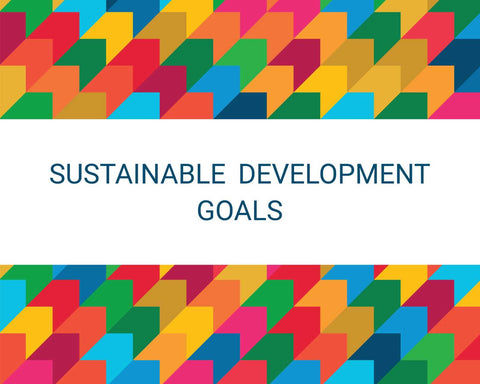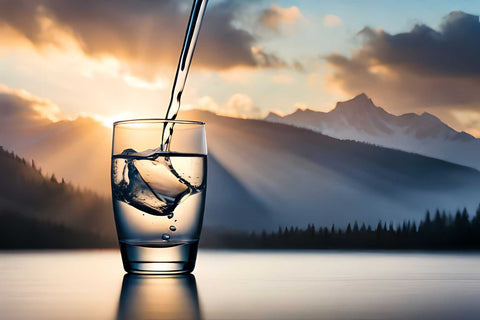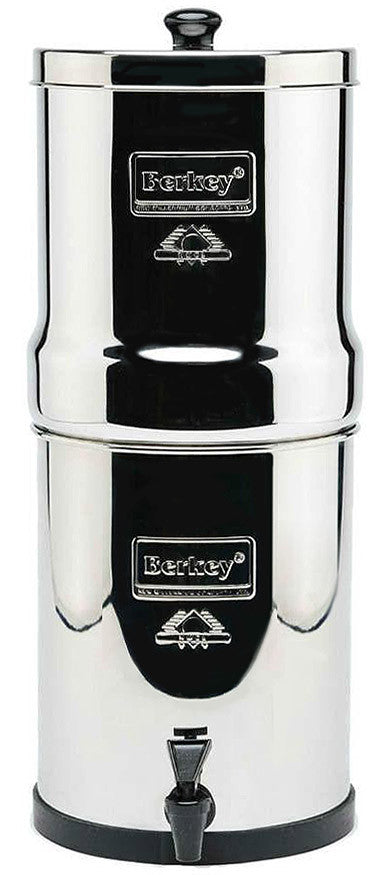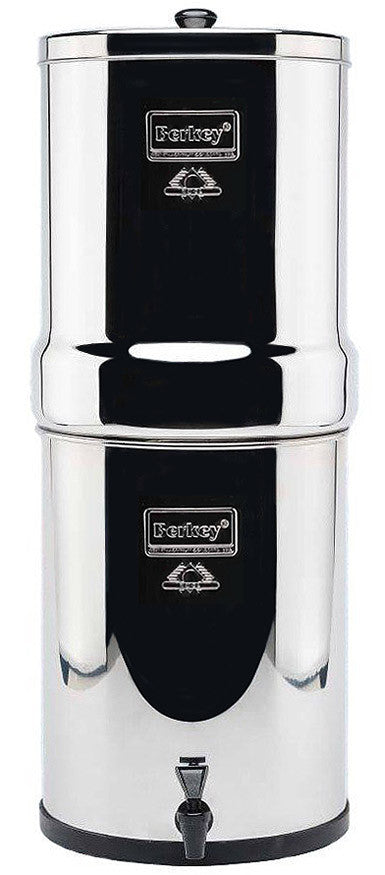Sanitation and Hygiene: Address Water Scarcity and Promote Equitable Sanitation
 As we approach modernity, the human population seems to grow simultaneously. Naturally, the water demand grows as well.
As we approach modernity, the human population seems to grow simultaneously. Naturally, the water demand grows as well.
In addition, the world's overly industrialized and modernized operations have resulted in human activities and climate change issues that disturb normal water cycles, putting freshwater biological systems under tension.
If you consider instances of poor water management, pollution, infrastructure development, and resource extraction further fuel the adverse consequences on our freshwater frameworks. We can't stand to be reckless with this indispensable asset.
Be that as it may, it goes without saying that water is vital for life. Clean and fresh water is important for drinking and sterilization, accommodating the harvests, animals, and industry, and making and supporting the environments on which all life depends.
To that end, nations must coordinate the administration, assurance, and rebuilding of the world's freshwater environments while expanding flexibility to the effects of environmental change.
This ensures that water can uphold human prosperity, advance comprehensive development, upgrade ecological well-being, and lift strength while lessening risk from regular and man-made calamities.
Water comprises around 75% (75%) of the world's surface; only a small portion is drinkable, i.e., freshwater.
Around 97% of the water on our planet is saltwater present in seas and oceans, and just 3% is new water, such as lakes, streams, water vapors, and so on, that we can use for our daily necessities and drinking.
To reiterate, water is valuable in all aspects of life and ventures. It is also known as a universal solvent. Therefore, it is particularly significant in science to make different synthetic responses.
Since new water is accessible in restricted amounts in nature, it should be rationed because the rate at which water gets renewed through the water cycle is much slower than at the rate at which it is consumed.
To understand better, recall that water is used in many ways, including but not limited to the following:
1.1 Drinking and Household Needs
Domestic water supply implies the source and infrastructure that gives water to families. A homegrown water supply can take various structures: a stream, a spring, a hand-dug well, a borehole with a hand pump, a water collection system, a funneled water supply with a tap stand or house connection, or water sellers.
Families use water for many reasons: drinking, cooking, washing hands and body, washing clothes, cleaning cooking tools, cleaning the house, watering creatures, flooding the nursery, and frequently for business exercises.
Different water sources might be utilized for various household activities, and the water sources accessible may change with the seasons. This helps create universal and equitable access to sanitation and hygiene.
Moreover, affordable drinking water is also important for households to achieve equitable access to good drinking water quality. Needless to say, families need drinking water that is safely managed and free from hazardous chemicals.
After all, water makes up most of the body weight and is engaged with numerous significant capabilities.
This incorporates flushing out waste from the body, regulating body temperature levels, and enhancing brain capacity.
Ultimately, drinking water accomplishes something beyond extinguishing thirst. It's fundamental for keeping the body working appropriately and feeling amazing.
Water generally does wonders for human bodies: It directs internal heat levels, saturates tissues in the eyes, nose, and mouth, safeguards body organs and tissues, conveys supplements and oxygen to cells, greases joints, reduces the weight on the kidneys and liver by flushing out side effects, and breaks down minerals and supplements to make them available to the body.
1.2 Industry and Commerce
Large industries essentially utilize freshwater because salt water is unacceptable for most applications, as it consumes the metal parts used in hardware.
Around 1/4 of water is utilized in the business. Reference has been made to significant water use for cooling and power age.
Water likewise plays a huge part in most assembly businesses, particularly food handling, preparing soda pop, and assembling synthetic substances and materials. A large part of the water the ventures utilize is released once more into streams and seaside water, causing critical contamination.
Water is also important in business and industry. Although businesses such as emergency clinics, cafés, and schools don't manufacture products, they offer support.
The commercial industry mainly involves fabricating items. Water helps maintain the apparatus needed to move items as planned and effectively. It can likewise be an essential element in sports drinks or soda pops. Businesses also require large supplies of water.
The hardware depends on water to cool it to a temperature that keeps the assembly system running. Similarly, the mining business needs water to wash off the material raised underground so that the certified item can be distinguished from different particles.
Water is likewise used to clean machines, structures, and even, on account of the meat handling industry, the remains of the steers, pigs, and different creatures that will be managed into the things found in the meat part of the neighborhood grocery store.
1.3 Agriculture
It would not be an understatement to say that agriculture utilizes the most water globally. This is especially true in Africa, Asia, and South America. Water utilization for water systems such as irrigation per individual shifts enormously globally.
Water used for water systems can be siphoned from groundwater reserves or pumped into streams or groups of discarded surface water. It is applied to crops by flooding, through channels, as a splash, or dribbling from spouts.
Crops also get water from precipitation. Water is perhaps the most fundamental element for crop production.
As we all know, plants need water consistently and in enormous amounts. Water significantly impacts photosynthesis, respiration, absorption, translocation, utilization of mineral nutrients, and cell division, among other cycles. Thus, water is a basic contribution to horticultural creation and plays a significant role in food security.
Watered agribusiness addresses twenty percent (20%) of the developed land and contributes forty percent (40%) of overall food. It is no less than twice as useful per unit of land as rainfed horticulture, considering more creation increase and harvest broadening.
United Nations Water: Expanded International Cooperation
United Nations Water (UN-Water) is an interagency system that arranges the endeavors of United Nations entities and global associations dealing with water and sterilization issues.
Additionally, UN-Water members and partners educate about water and sterilization strategies, screen and report on progress, and direct two yearly worldwide missions on World Water Day and World Toilet Day.
Regarding key political processes, UN-Water members have incorporated water and disinfection into various agreements, including the 2023 Agenda for Sustainable Development (which resulted in the Sustainable Development Goals (SDGs)), the 2015-2030 Sendai Framework for Disaster Risk Reduction, the 2015 Addis Ababa Action Agenda on Financing for Development, and the 2015 Paris Agreement under the UN Framework Convention on Climate Change.
On the other hand, UN-Water's monitoring and reporting expect to address the issues of the 2030 Agenda. Hence, UN-Water launched the Integrated Monitoring Initiative for SDG 6, expanding on and expanding the experience and illustrations mastered during the MDG time frame.
All the caretaker organizations of the SDG 6 worldwide markers have met up under the drive, which incorporates crafted by the WHO/UNICEF JJoint Monitoring Programme for Water Supply and Sanitation (JMP), the inter-agency initiative GEMI and UN-Water Global Analysis and Assessment of Sanitation and Drinking-Water (GLAAS). The UN-Water likewise applies work to help its mission activities.
Consistently, UN-Water organizes the United Nations' international observances on freshwater and sanitation: World Water Day and World Toilet Day. Depending on the official UN theme of the campaign, they are supported by at least one UN-Water member and partners with a coordinated command.
On World Water Day, UN-Water delivers the World Water Development Report, zeroing in on a subject similar to the campaign.
For obvious reasons, the UN-Wate is one of the top-tier organizations leading the fight for universal and equitable access to sanitation and hygiene, affordable drinking water, protection of water-related ecosystems, safely managed sanitation services, sustainable water management, and water efficiency through international cooperation.
Ultimately, sustainable development begins with capacity-building support and sustainable development that promotes water sanitation and hygiene.
Sustainable Management of Water: The Sustainable Development Goals and So-Called SDG 6
 All United Nations Member States give a common outline to harmony and success for individuals and the planet, presently and into what's in store through the 2030 Agenda for Sustainable Development in 2015.
All United Nations Member States give a common outline to harmony and success for individuals and the planet, presently and into what's in store through the 2030 Agenda for Sustainable Development in 2015.
The basis of its goals is the 17 Sustainable Development Goals (SDGs), which is a pressing call for action by developed and developing countries worldwide.
At this point, ending poverty and other deprivations is perceived as inseparable from procedures that further develop health and education, reduce inequality, and spur economic growth.
They do so, all the while tackling climate change and working to preserve our oceans and forests.
Feasible improvement has been characterized as an advancement that addresses the issues of the present without compromising the capacity of future generations to address their issues.
Maintainable improvement calls for coordinated endeavors to build a comprehensive, reasonable, and strong future for individuals and the planet.
In the present day, the Sustainable Development Goals (SDGs) in the United Nations Department of Economic and Social Affairs (UNDESA) offer meaningful help and capacity-building support for the SDGs and their related topical issues.
Thematic issues include water, energy, climate, oceans, urbanization, transport, science and technology, the Global Sustainable Development Report (GSDR), partnerships, and Small Island Developing States.
DSDG is key in assessing the UN systemwide execution of the 2030 Agenda and in support and effort exercises connecting with the SDGs.
To make the 2030 Plan a reality, wide responsibility for SDGs should convert into serious areas of strength for all partners to carry out the worldwide objectives. DSDG plans to assist with working with this commitment.
The UN Secretary-General consistently presents a yearly SDG Progress report, created in collaboration with the UN Framework and light of the worldwide pointer structure, information delivered by public measurable frameworks, and data gathered at the provincial level.
Sustainable Development Goal 6 (SDG) is one of the UN's 17 Sustainable Development Goals.
It focuses on water and sanitation-related actions, such as basic handwashing facilities, safe and affordable drinking water, water harvesting, good ambient water quality, and capacity-building support for water efficiency.
These premises govern developed and developing countries in vulnerable situations like water scarcity. To be more precise, Sustainable Development Goal 6 (SDG 6) is"clean water and sanitation for all," one of 17 Sustainable Development Goals established by the United Nations General Assembly in 2015; the official wording is: "Ensure availability and sustainable management of water and sanitation for all."
SDG 6 outcomes include safe and affordable drinking water, ending open defecation and providing access to sanitation and hygiene, improving water quality, wastewater treatment, and safe reuse, increasing water-use efficiency and ensuring freshwater supplies, implementing IWRM, and protecting and restoring water-related ecosystems.
However, it is necessary to emphasize that Sustainable Development Goal 6 (SDG 6) is more than drinking water, disinfection, and cleanliness. It addresses the quality and sustainability of water assets, essential to the endurance of individuals and the planet.
SDG 6 promotes affordable drinking water and aims to restore water-related ecosystems, enhance water and sanitation management, address water scarcity, and campaign for equitable sanitation through international cooperation.
SDG 6 also ensures the availability and sustainable management of water in local communities by providing basic drinking water services, designing established and operational policies, and strengthening transboundary cooperation to attain universal and equitable access to good water quality.
Ultimately, sustainable management of water resources and admittance to safe water and disinfection are fundamental for opening monetary development and efficiency and greatly influence existing interests in well-being and schooling.
Address Water Scarcity: Water Quality and Water Efficiency for Global Population
 In conclusion, overpopulation has increased water demand, while extreme dry seasons have restricted its supply.
In conclusion, overpopulation has increased water demand, while extreme dry seasons have restricted its supply.
Hence, conserving water will facilitate our daily activities, allow us to cook food, and protect our environment. Saving water additionally decreases the burden on water treatment facilities in the most cost-efficient and energy-efficient way.
Besides, utilizing less water keeps more in our environments and assists with keeping all living spaces bested up for animals.
Indeed, the growing population does not fit with such a small level of all the water on Earth for equitable consumption. Hence, it is pretty understandable why we should save and conserve this valuable asset.
← Older Post Newer Post →





